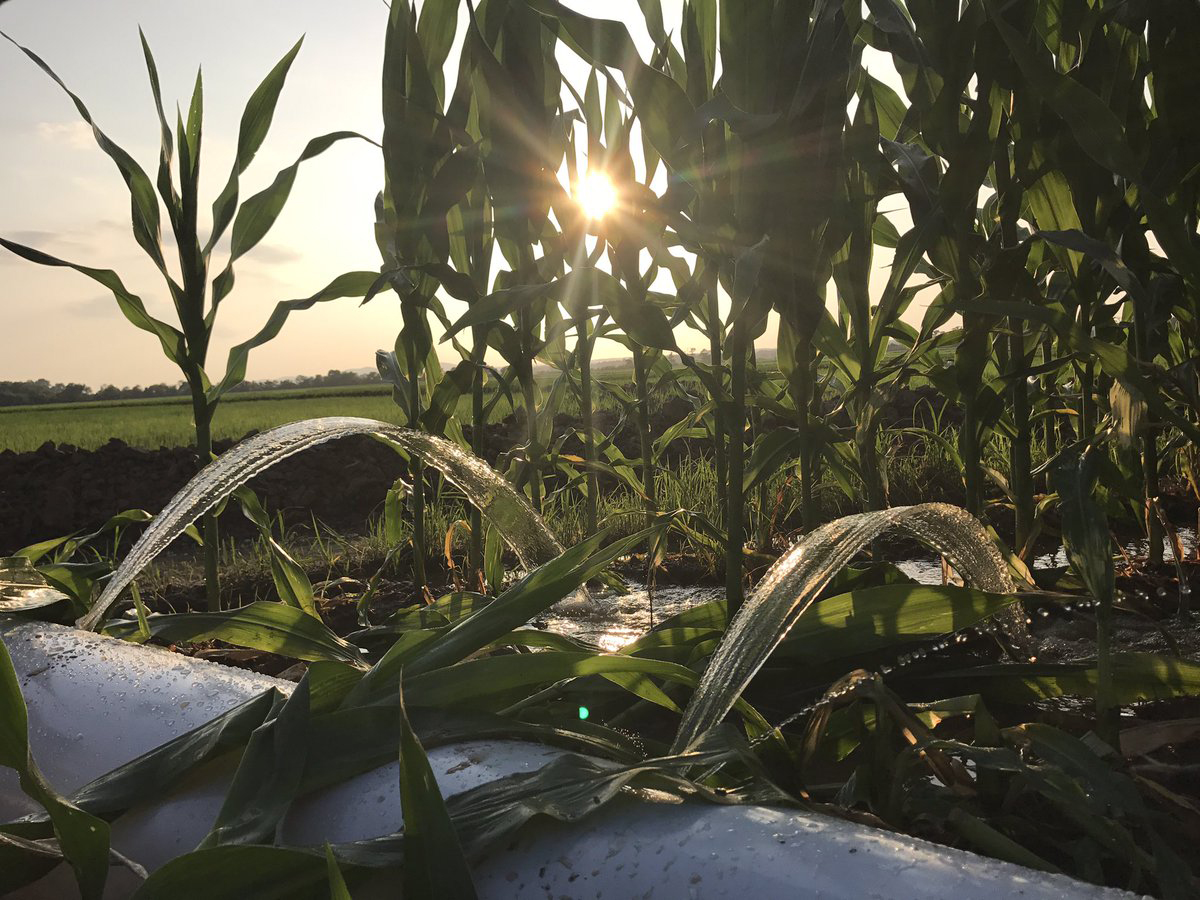Neighborly influence on irrigation choices could reinforce sustainable practices

Peers are powerful influencers in day-to-day choices — even for specialized decisions like irrigation practices.

Kent Kovacs, a research scientist for the Arkansas Agricultural Experiment Station, has collected data illustrating the impact a peer’s influence can have on one of the biggest factors in farming — water use. The experiment station is the research arm of the University of Arkansas System Division of Agriculture.
Kovacs set out to understand the social drivers of a farmer using a particular irrigation practice in the Arkansas Delta. Agriculture is the third largest groundwater user in the country.
“We want to know what it is determining the practices that we think in some cases are going to help producers to use water more efficiently,” Kovacs said.
Previous research indicates that a range of demographic, climatic and economic factors influence what irrigation practice producers use. This project expanded to explore the possible social or peer effects on a farmer’s choices.
The data in his project indicate that peers influence a farmer’s irrigation practice in the Arkansas Delta. The influence depends on the farm location and current farm practices.
Aquifer use for agriculture
The Arkansas Delta uses groundwater from the Mississippi River Valley Alluvial Aquifer. An aquifer is a body of rock and or sediment that stores groundwater, which can come to the surface through springs or wells. Although aquifers are recharged by precipitation, pumping too much water too fast will cause a well to yield less and possibly run dry.
The Mississippi River Valley Alluvial Aquifer underlies nearly 33,000 square miles across Arkansas, Louisiana, and Mississippi, and is the primary source of irrigation water in eastern Arkansas. The aquifer is experiencing large areas of declining water levels, according to a report from the state geologist. The report recommends different methods of growing different crops to prevent the loss of the state’s aquifer.
Irrigation accounts for 97 percent of water use in Arkansas, according to the United States Geological Survey. In 2015, Arkansas used 9.6 billion gallons of water per day. Arkansas is second to California, which uses the most water in the United States at 17.4 billion gallons per day.
“We want to use scarce resources in the most efficient way possible,” Kovacs said. Through understanding peer effects on irrigation practices, implementing practices that use water efficiently can allow the aquifer to recharge, either at the pace of water use or exceeding it.
Investigating irrigation practices
Kovacs’ research draws on data from an irrigation survey conducted in 2015 to understand which practices that producers were using.
The research team explored the frequency of using five of the most popular irrigation practices for row crops: scientific scheduling, flow meters, pivot, computerized hole selection, and surge. The row crops in Arkansas include soybean, corn, and cotton, and the most common of these irrigation practices are computerized hole selection and center pivot.
“Computerized hole selection consists of pumping water through poly pipe punctured with holes of various sizes and spacings to fit a farmer’s irrigation purposes,” Kovacs said. Water is pumped through the poly pipe along the edge of the field.
“Center pivot is largely used by farmers near the Mississippi River because it works well for row crops on well-drained soil where ample amounts of groundwater exist,” Kovacs said. Pivots include mounted and portable sprinkler systems that rotate around a pivot point to irrigate crops.
“We’re interested in all these potential determinants of the irrigation practices, but we pay special note to whether or not they’ve got a peer that’s using their own practice or whether they’ve got a peer using another sort of irrigation practice,” Kovacs said.
The researchers looked at the survey answers in context of how peers influence one’s choice. A peer is a family, friend, or neighbor who used a practice in the last 10 years.
He categorizes peer influence as either an “own practice peer effect” or “cross practice peer effect.” An “own practice peer effect” is when a peer’s irrigation practice leads to another farmer adopting the same practice. A “cross practice peer effect” is when a peer using one practice influences a farmer to use a different practice.
The team found that a producer with a peer who uses flow meters — a device that gauges the water flowing from a pump — is 29 percent more likely to use flowmeters themselves, which is an example of an “own practice peer effect.”
“They also found that a producer with a peer that uses scientific scheduling is 30 percent less likely to use center pivot, which is an example of a cross practice peer effect. Scientific scheduling consists of using approaches other than feeling the soil, such as soil moisture sensors or Woodruff charts,” Kovacs said. Woodruff charts allow producers to apply water to a plant when it needs it based on historic weather data and crop water use.
“There’s lots of things for producers to be worried about, but of one the things they’re concerned about is their input costs — and a big input for them is water,” Kovacs said.
“In terms of improving people’s livelihoods, it’s key to have them use more sophisticated technologies,” he said.
Kovacs said the team has expanded this research question to look at rice irrigation practices in the Delta.
The Arkansas Soybean Promotion Board and Arkansas Rice Promotion Board supported this research.
To learn more about Division of Agriculture research, visit the Arkansas Agricultural Experiment Station website: https://aaes.uada.edu. Follow on X at @ArkAgResearch. To learn more about the Division of Agriculture, visit https://uada.edu/. Follow us on X at @AgInArk. To learn about extension programs in Arkansas, contact your local Cooperative Extension Service agent or visit www.uaex.uada.edu.


